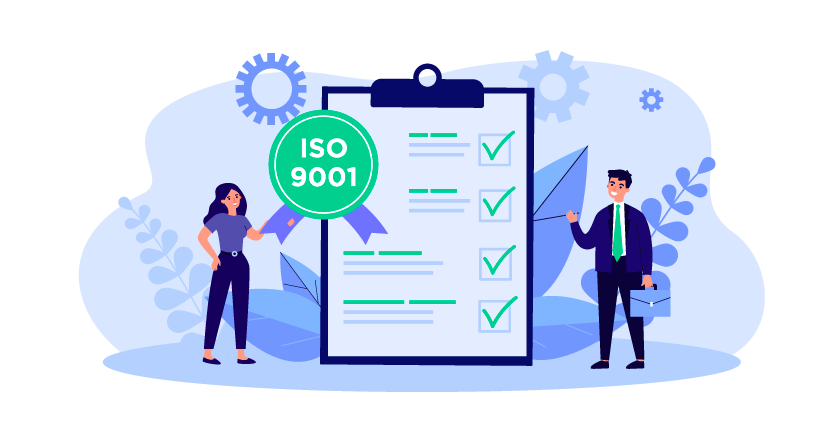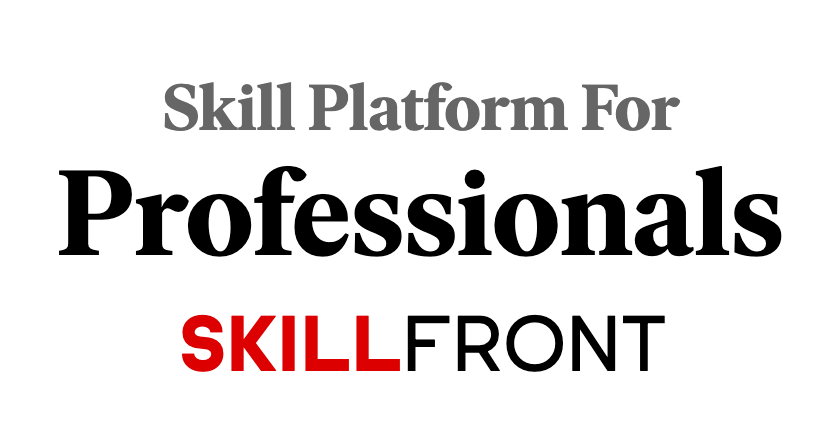ISO 9001 Requirements: The Best Guide For Affordable Compliance
Written by Yeliz Obergfell, CEO of SkillFront, The Premier Skill Development and Official Credentialing Organization on January 23rd, 2024.
Navigating through the labyrinth of ISO 9001 requirements can be overwhelming for even the most seasoned professional. Yet, achieving compliance is crucial to your business’s competitiveness, credibility, and success. Join us as we unravel the dense nodes of ISO 9001, offering you practical insights into the entire process, from understanding its core principles, decoding terminologies, to fulfilling specific stipulations without slipping off the tightrope. This comprehensive guide promises to light your path towards hassle-free ISO 9001 compliance!
The main requirements of ISO 9001 are outlined in its standard, which includes elements such as establishing a quality management system, defining processes and procedures, setting objectives and targets, implementing corrective actions, conducting internal audits, and continuously improving the effectiveness of the system. For a detailed understanding of ISO 9001 requirements, it is recommended to consult the official ISO 9001 standard or contact a accredited ISO certification body for accurate guidance specific to your organization's needs.
ISO 9001 Requirements Overview
In today's competitive business world, customers and clients expect quality products and services from companies they work with. To meet these demands, many businesses implement an internationally recognized quality management system called ISO 9001. This standard lays out the requirements that companies must meet to achieve compliance and ensure effective quality management.
Imagine a company that manufactures car parts. If this company wants to stay competitive in its market, it will need to have a reliable quality management system in place to ensure that its parts meet specific standards. This is where ISO 9001 comes in - by following the requirements of this standard, the company can ensure that their quality management system meets international standards and is effective at producing quality components.
To become certified as compliant with ISO 9001, companies must undergo a rigorous certification process where independent auditors assess the organization's adherence to the standard's requirements.
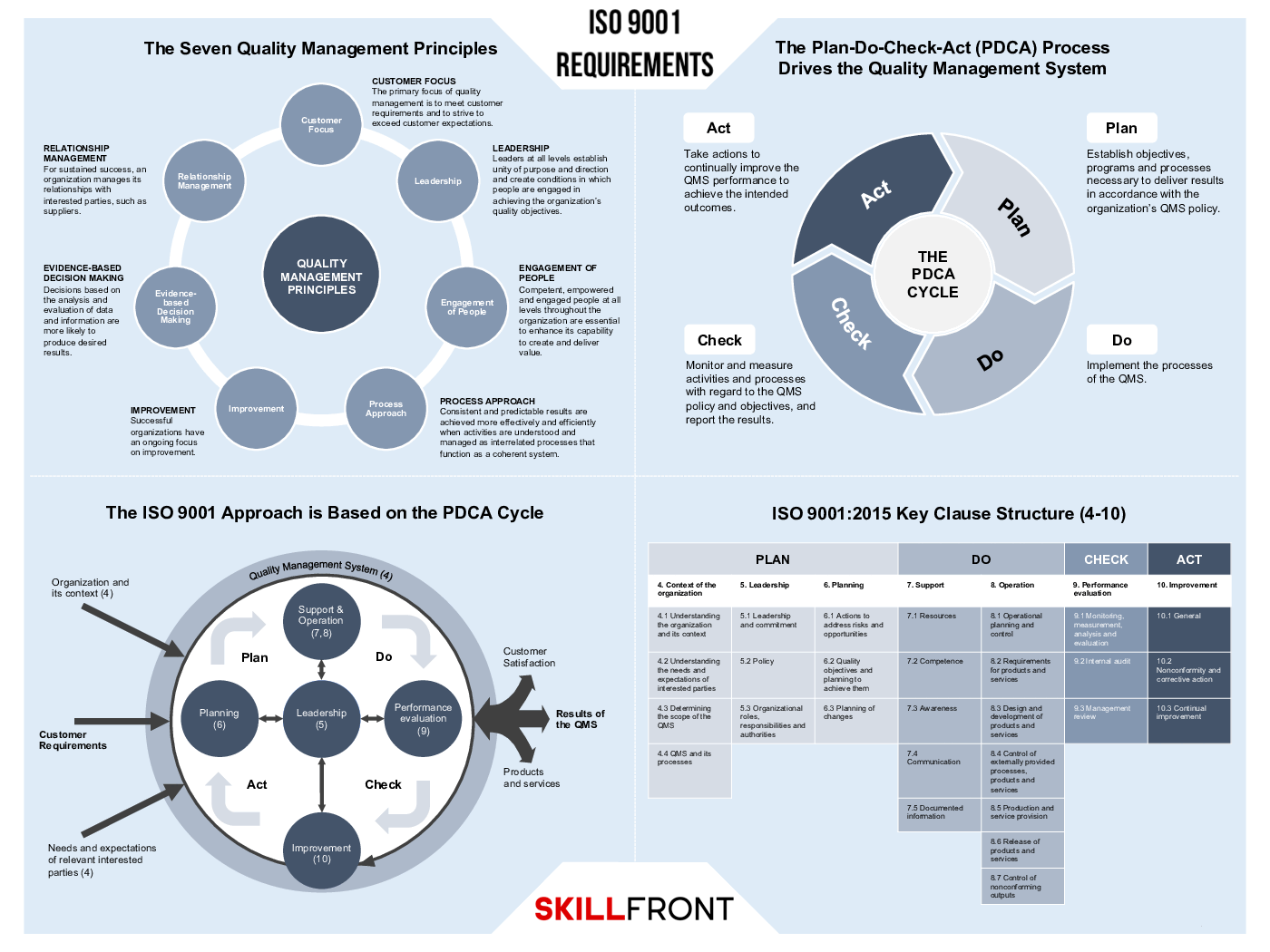
Documentation and Document Control
One significant component of achieving ISO 9001 compliance is ensuring appropriate documentation and document control procedures are in place. This requirement ensures that all necessary documents relating to the company's quality management system are controlled, monitored, and adequately maintained. Think of documentation as an instruction book; without clear instructions, it's easy for processes to break down or fail. Inadequate documentation could lead to mistakes or noncompliance with regulations, which might impact your ability to remain competitive in your industry.
Required Documentation Types
When it comes to ISO 9001 certification, proper documentation is critical. The documentation requirements laid out in the standard are designed to ensure that quality management system (QMS) processes are well-defined and consistently applied across all levels of an organization. There are several documentation types required for ISO 9001 compliance, including:
| Document Type | Description |
|---|---|
| Quality Manual | Provides an overview of the QMS structure and main processes |
| Procedures | Defines specific actions to be taken within a process or set of processes |
| Work Instructions | Provide detailed instructions on how to complete a specific task or activity |
| Forms and Records | Used to capture data related to process performance or product conformity |
Each of these document types serves a specific purpose in helping organizations meet the requirements of ISO 9001. By creating and maintaining this documentation, companies can ensure that their QMS processes are clearly defined, properly executed, and constantly improved upon.
It's worth noting that while ISO 9001 does mandate certain documentation types, there is still some flexibility in how those documents are created and maintained. Organizations may choose to create separate documents for each individual process or group them together under a broader framework.
Regardless of how they're structured, however, all required documentation should be developed with a clear understanding of the intended audience. It should be easy to understand and accessible to all those who need it.
Document Control Procedure
One of the most vital components of any QMS is proper document control. Without it, organizations run the risk of distributing outdated or incorrect information which can lead to serious consequences such as regulatory non-compliance or faulty products.
Let's say a company has updated its procedure for handling customer complaints but fails to notify employees of the change. As a result, employees continue operating under the old procedure which now violates regulatory requirements related to consumer protection. This could result in fines or even legal action against the company.
To avoid such scenarios, a document control procedure should be established, outlining how documents are created, reviewed, approved, distributed, and updated throughout their lifecycle. The main elements of an effective document control procedure are:
- Document Identification: Identifying documents with unique identification numbers and descriptive titles
- Document Approval: Establishing how documents are approved for release and distribution
- Document Review & Revision: Setting up procedures to ensure that documents are regularly reviewed and revised when necessary
- Document Distribution: Defining the method of distribution, tracking, and retrieval of master copies of controlled documents as well as ensuring access to relevant stakeholders
- Document Obsolescence: Once a document has been updated or replaced, ensuring obsolete copies are removed permanently
To maintain compliance with ISO 9001 requirements, proper document control is key. It ensures that organizations can track critical changes in the QMS while reducing waste and improving efficiency.
Proper document control is essential for organizations to maintain compliance and avoid serious consequences. By establishing a document control procedure, companies can ensure that their documents are up to date, accurate, and accessible to relevant stakeholders. This includes identifying documents with unique numbers and titles, establishing approval processes, regularly reviewing and revising documents, effectively distributing and tracking controlled documents, and properly removing obsolete copies. Following these steps not only helps organizations adhere to ISO 9001 requirements but also improves efficiency and reduces waste in the quality management system.
The Path to ISO 9001 Certification
ISO 9001 is a globally recognized standard for quality management systems. It delineates a set of requirements that organizations should follow to achieve customer satisfaction, improve productivity, and streamline business processes. Gaining certification to this standard can enhance the reputation of your organization, increase employee morale, and appeal to customers who are more likely to do business with ISO-certified companies.
Let's consider an example: Say you run a manufacturing company that produces metal parts. By becoming ISO 9001 certified, you'd be able to demonstrate to your customers that you have stringent quality control measures in place, reducing the risk of faulty products and damage claims.
The path to certification may seem daunting, but it's essential to understand that it's a journey rather than a one-time event. This process involves multiple stages and requires diligent effort from all stakeholders involved.
- As of December 2021, more than 1.12 million ISO 9001 certificates had been issued across 187 countries.
- In a survey conducted in 2019, over 70% of organizations reported notable improvement in their processes after implementing ISO 9001 standards.
- Data collected in 2020 showed that within the United States, manufacturing accounted for the largest share (20%) of industries that have achieved ISO 9001 certification.
Where does SkillFront Accreditation Come From?
SkillFront Accreditation builds its services, and SkillFront Accreditation serve you and your business from Switzerland with love. SkillFront is the leading organizational and professional accreditation development, certification and accreditation body that provides education, certification and accreditation services globally in all domains of business and information technologies.
Steps in the Certification Process
While the certification process may vary based on organizational size and complexity, the fundamental principles remain consistent.
Step 1: Understand Requirements - The first step towards certification is understanding the requirements of the ISO 9001 standard. It includes developing quality objectives influenced by the organization's context, assessing risks and opportunities for improvement, establishing a quality management system framework — including policies procedures, documents and records as well as developing key performance indicators to track progress.
Step 2: Plan - Develop a comprehensive plan that includes timelines, roles and responsibilities for achieving these objectives.
Step 3: Implementation - Implementing a quality management system that addresses all the requirements is key. Every department has its role to play in ensuring compliance with this new system. Appointing a management representative responsible for communication between top-level management and employees at different levels will ensure everyone stays aligned.
Step 4: Internal Audit - Before attaining certification, it is necessary to conduct a thorough internal audit to check the effectiveness and efficiency of the system. The audit identifies discrepancies and opportunities for improving the quality management system.
Step 5: Certification Audit - Once the organization has established that its quality management system is functioning in line with ISO requirements, it's time to request an external certification body to conduct an audit to verify compliance. The table below highlights the key stages involved:
| Stage | Description |
|---|---|
| Contracting | Defining the scope and objectives of the certification audit |
| Stage 1 Audit | An initial audit assessing the suitability of your management system, identifying strengths, and highlighting areas for improvement |
| Stage 2 Audit | A more advanced assessment verifying the effectiveness of the management system against ISO standards |
| Reporting | A comprehensive report provided which outlines non-conformities and actions required to achieve certification |
Say you pass all stages successfully, congratulations! You have now achieved ISO 9001 certification. Nevertheless, attaining certification doesn't mean organizations should rest on their laurels; continuous improvement is essential. Undertaking regular internal audits while staying vigilant with monitoring performance indicators will keep your organization aligned with customer needs while fostering a culture of consistency.
Understanding this process sets the foundation for successful achievement. However, metrics like compliance rates don't define ultimate success; ensuring customer satisfaction should be the end objective.
Emphasizing Customer Satisfaction
The ultimate goal of any business is to satisfy its customers. That's why the ISO 9001 standard has a strong emphasis on customer satisfaction. Organizations that meet ISO 9001 requirements must ensure they have processes in place to monitor and measure customer satisfaction regularly. By doing so, the company can optimize its customer service experience by identifying areas for improvement and developing strategies to enhance overall levels of customer satisfaction.
One way to approach this is by implementing a feedback loop process, which is an essential component of the ISO 9001 Quality Management System (QMS).
For instance, imagine a small business that produces handmade leather goods. To maximize customer satisfaction, it would be vital that the quality of each product is consistently high, orders are delivered on time, and'response times to inquiries or complaints from customers are fast. Regularly soliciting feedback through surveys or social media platforms would help them address concerns quickly while building loyalty and engagement with their customers.
Dealing with Customer Feedback
As we highlighted above, monitoring customer satisfaction is crucial for any organization looking to achieve ISO 9001 compliance. Gathering feedback from customers gives organizations insight into how well their products or services match customers' expectations and where possible improvements need to be made.
However, simply collecting feedback isn't enough. Organizations must take action on negative feedback promptly. Complaints management should be integrated into your QMS, where appropriate procedures are determined for how you plan to manage and escalate each complaint as required.
When addressing negative feedback from a customer, prompt action and empathy matter most.
Take an example of a dissatisfied customer who had issues with a product they ordered online: They wrote an email to the manufacturer expressing their disappointment about how long it took for their product to arrive after ordering. Instead of responding defensively or passing blame, the manufacturer could acknowledge their concern compassionately by apologizing and offering a practical solution (e.g., a refund or expedited shipping).
If the feedback received is a suggestion of improvement, work with your stakeholders to assess the technical feasibility of that suggestion and its impact on product quality or service. Make it clear that you're committed to meeting the customer's expectations, and ensure that you follow through on implementing changes in response to their feedback.
While customer satisfaction may feel like an intangible metric, dealing with such feedback is a valuable learning experience for any organization dedicated to continuous improvement.
Pursuing Continuous Improvement
One of the most significant benefits of implementing an ISO 9001 compliant Quality Management System (QMS) is that it helps organizations pursue continuous improvement. This means continually identifying opportunities to enhance products, services, processes, and systems, ultimately leading to increased customer satisfaction and organizational efficiency.
For instance, the PDCA cycle (Plan-Do-Check-Act) included in Clause 10 of the standard provides a framework for a continuous improvement system. Through this cycle, organizations develop objectives considering the context of their QMS that are aligned with the company’s goals, policies, and regulatory requirements. The next step is executing these objectives by deploying them throughout all levels of the organization. Next is a review of the results through performance metrics/checks to determine whether they’ve achieved what was set out to be achieved. Finally, actions plans for improvements are identified and enacted itself, creating a new cycle.
Picture your company as a plant that requires regular watering and maintenance to thrive. Implementing and maintaining an ISO 9001 compliant QMS serves as the water and care needed to cultivate a fruitful growth environment for your business.
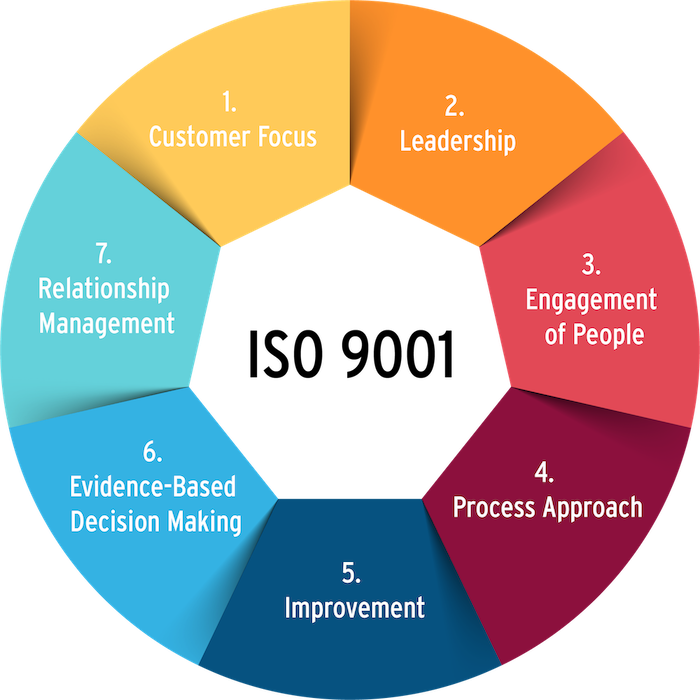
Improvement Strategies
An organization's QMS must always have room for continual improvement. Ensuring things run efficiently and effectively should be at the forefront of their focus. Two effective strategies include Kaizen and Six Sigma methodologies.
Kaizen refers to continuous improvement that involves everyone in a company from top-level management down to its employees at different levels. It aims to improve quality, reduce waste, lead times, costs whilst encouraging employee involvement and problem-solving techniques.
Six Sigma gets its namesake from its methodology ability to streamline company processes with minimal defects with less than 3.4 errors over one million tries (opportunities). It comprises five phases: define, measure, analyze, improve and control (DMAIC), allowing an organization to identify any potential issues in their processes, rectify these, and continually improve.
However, approaches to continuous improvement are not limited to Kaizen and Six Sigma. Various other methods can be applied depending on what an organization needs.
Other tactics that can be incorporated into an improvement plan include root cause analysis tools like Ishikawa (fishbone) diagrams or the 5 Whys to identify inefficiencies within the company’s system. Mind-mapping exercises or project management tools like Agile methodology can also be utilized to streamline tasks in a systematic approach.
Whether it's ensuring employees' skills’ continue to evolve, enhancing operations, device an awareness operation or refining business model and organizational structure, the future of companies relies heavily on advanced optimization of QMS processes.
Legal Implications and Compliance
For organizations seeking to excel in quality management, achieving compliance with ISO 9001 requirements is vital. ISO 9001 is an internationally recognized standard that outlines a comprehensive Quality Management System (QMS) framework applicable to any organization, irrespective of its size or industry. Adhering to this will help businesses demonstrate their ability to consistently provide products and services that meet customer satisfaction standards while adhering to relevant regulatory mandates.
Meeting the requirements outlined in ISO 9001 provides legal implications for the organization, as it's considered a benchmark for quality management globally. In addition, customers look towards companies with updated QMS as it assures them of new and consistent processes, which helps enhance customer confidence through providing excellent products and services. Conversely, non-compliance can lead to negative impacts such as legal penalties or reduced sales.
Imagine a medical equipment manufacturing firm not adhering to ISO 9001 requirements since it feels like an unessential cost - it would put a patient's life at risk if they switch from using faulty equipment. The company could also face massive lawsuits leading damaging publicity costs.
To be certified by ISO 9001 means the organization must prove that all internal processes align with all requirements specified in the standard. It involves documenting quality policies, objectives, procedures, work instructions, and other supporting documents required for successful implementation of QMS.
Compliance with applicable laws and regulations creates reassurance among clients, stakeholders, employees, related governing authorities, and the public while maintaining high standards of product/service quality.
Principles of Quality Management
ISO 9001 includes several principles of quality management that businesses should adhere to in pursuit of compliance – Customer Focus, Leadership commitment, Process approach, Continuous improvement together with Evidence-based decision making constitute the keystones of these principles.
Customer focus differentiates successful organizations from others: understanding and managing stakeholder needs and expectations leads to increased trust-building and benefits both the organization and customers.
Leadership commitment involves ensuring that QMS strategies align with organizational plans and objectives. Leaders within the company are equally responsible for implementing and sustaining quality management systems since their commitment is an essential factor in determining overall success.
The process approach divides business activities into individual parts, identifying inter-related processes they then carry out plan engagements while monitoring and measuring activities to determine improvements in the system.
Continuous improvement comprises several complementary methodologies like Kaizen, Lean, Six Sigma to maintain and improve quality by making on-going efforts in optimizing and refining QMS to achieve better outcomes.
Evidence-based decision-making entails deciding using quantitative or qualitative methods backed by statistical evidence due to its accuracy. The ultimate goal is to make measurable improvements from the data collected.
ISO 9001 Quality Management System principles resemble a vehicle’s wheel – each keystone is critical to smooth operational functioning and loss of one can lead to significant damage or failure.
What industries or businesses need to comply with ISO 9001 requirements?
ISO 9001 requirements apply to a wide range of industries and businesses, aiming to improve their quality management systems. Industries such as manufacturing, healthcare, automotive, aerospace, construction, and food production are among the sectors that benefit from ISO 9001 compliance. According to recent statistics, approximately 1.1 million certificates have been issued worldwide, showcasing its global relevance and adoption across various sectors (ISO Survey, 2023). Compliance with ISO 9001 helps businesses enhance customer satisfaction, increase operational efficiency, reduce risks, and foster continuous improvement in their processes.
What are the specific steps involved in becoming ISO 9001 certified?
The specific steps involved in becoming ISO 9001 certified include conducting a gap analysis to identify any non-conformities, creating and implementing a quality management system (QMS) that complies with the ISO 9001 requirements, training employees on the QMS, conducting internal audits to verify compliance, and finally undergoing an external audit by a certification body. According to recent statistics, as of 2021, there were over one million ISO 9001 certified organizations worldwide, demonstrating the widespread recognition and benefits of achieving ISO 9001 compliance.
How often do ISO 9001 requirements change and how can organizations stay up-to-date?
ISO 9001 requirements are revised approximately every seven years to ensure its relevance and effectiveness. To stay up-to-date, organizations can regularly monitor the International Organization for Standardization (ISO) website for any updates or changes. Additionally, joining industry associations and attending conferences and seminars can provide valuable insights and networking opportunities, helping organizations stay informed about the latest developments in ISO 9001 compliance. According to a survey conducted by Deloitte, 82% of organizations reported that actively staying up-to-date with ISO 9001 compliance has positively impacted their overall business performance.
Are there different versions or editions of ISO 9001 and do the requirements vary?
Yes, there are different versions of ISO 9001, and the requirements do vary between these versions. As of 2024, the current version of ISO 9001 is ISO 9001:2015. Compared to its predecessor (ISO 9001:2008), ISO 9001:2015 brought significant changes in terms of structure and content. The focus shifted from a prescriptive approach to a risk-based thinking perspective. These changes aim to enhance overall organizational performance and customer satisfaction. According to a survey conducted by the International Organization for Standardization (ISO), over 1.3 million organizations around the world were certified under ISO 9001:2015 as of December 2023, highlighting its global adoption and relevance.
What are some common challenges or obstacles that companies face when implementing ISO 9001 requirements?
Some common challenges that companies face when implementing ISO 9001 requirements include resistance to change, lack of employee buy-in, insufficient resources, and the complexity of the documentation process. According to a survey conducted by the International Organization for Standardization (ISO), 65% of companies cited resistance to change as a major obstacle during implementation, while 50% struggled with involving employees in the process. Additionally, 45% of companies reported resource limitations as a significant challenge, and 40% found it difficult to navigate the intricate documentation requirements.
ISO 9001 Requirements Recap & Information for the ISO 9001 Quality Management System Standard Certification
In understanding ISO 9001 requirements, organizations embark on a journey that aligns with established quality management principles. These principles serve as the foundation for the development of robust systems that not only meet customer requirements but also contribute to the overall enhancement of product and service quality. Key aspects covered within the ISO 9001 framework include planning, risk management, and the identification of preventive measures. By adhering to these guidelines, companies can establish a solid foundation for quality management, ensuring consistency and excellence in their operations.
An integral part of ISO 9001 requirements and ISO quality management systems family involve the consideration of various stakeholders, including customers, employees, and other interested parties. Recognizing the importance of people and their roles within the organization, the standard emphasizes the need for support mechanisms that foster a culture of quality. From the planning stage to the measurement of performance, ISO 9001 addresses the interconnectedness of different aspects within the organizational structure. It highlights the significance of monitoring and addressing nonconformities, emphasizing the proactive identification and resolution of issues to enhance overall quality.
In the complex landscape of quality management, one of the most critical elements encapsulated in ISO 9001 requirements is the effective management of risks. Organizations across every sector must be vigilant in identifying and mitigating potential risks that could impact the quality of their products or services. The integration of preventive measures and a meticulous approach to measurement and safety are paramount. There is no QMS risk tolerance for a nonconformity. By focusing on these crucial clauses, companies can not only achieve compliance with ISO 9001 but also fortify their commitment to delivering quality while establishing a distinct identity represented by the ISO logo. This commitment ensures customer satisfaction, builds trust within the industry, and ultimately places the organization and its products in a league of excellence.
How to Get Affordable and Fast-Track ISO 9001 Certification
Embarking on the journey towards ISO 9001 certification for your business has never been more accessible and efficient. Introducing the Swiss Quality From ISO's Home: ISO 9001 Company Certification, an affordable, fast-track ISO certification, and entirely online solution designed to streamline the certification process for your organization. Today, you have the exclusive opportunity to secure this comprehensive package at a single discounted price – an offer available for today only.
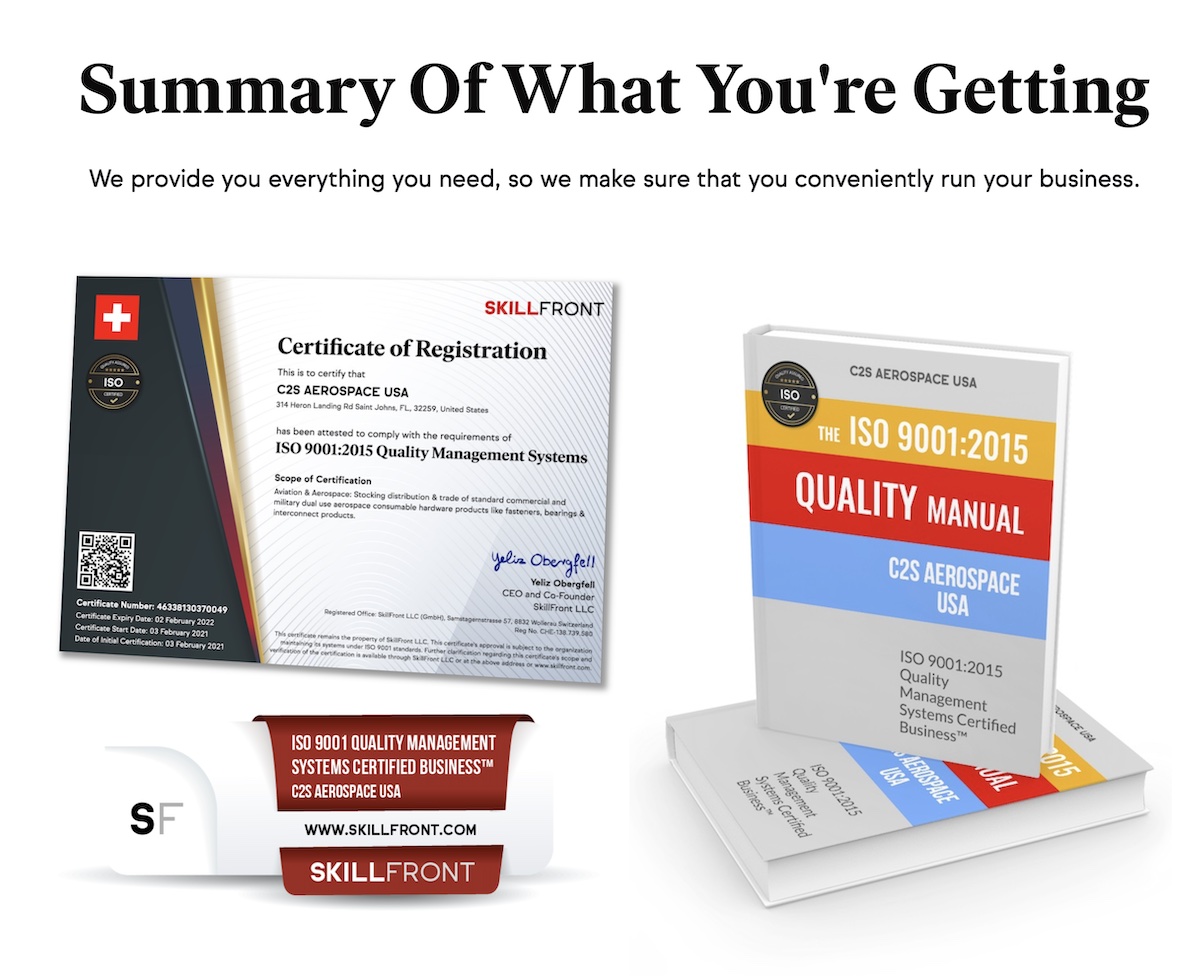
The ISO 9001 Company Certification Bundle is an all-inclusive solution that caters to every aspect of your certification needs. It not only provides you with the prestigious ISO 9001:2015 Quality Management Systems Certified Business™ Certification but also includes a sharable and verifiable digital badge, custom-made with your company name engraved on it. This badge serves as a digital representation of your commitment to quality, allowing you to showcase your certification easily.
As a further bonus, the bundle includes a detailed ISO 9001:2015 Quality Manual comprising 45+ pages, offering valuable insights and guidance for maintaining and enhancing your quality management systems. This comprehensive package is available at the unprecedented one-time discounted registration fee of only USD 497 – an investment that pays off manifold in terms of credibility, customer trust, and operational excellence. Seize this opportunity today to propel your business forward on the path of quality and success. There are no hidden fees or additional charges after your registration, making this an unbeatable offer that ensures your journey towards ISO 9001 certification is both cost-effective and expedited.
Follow the link here to certify your business in an efficient and affordable manner:
https://www.skillfront.com/ISO-9001-Company-Certification
Sharing is caring. By sharing this article, you help your friends find this article, that may not happen otherwise without your assistance.

Today Only: Get Started With 100% Free Program & Certification
SkillFront is known as the company that helps professionals learn skills that inspire them to find and execute profitable business ideas, grow companies, and become the category king of their markets. I want to give you a SkillFront Entrepreneur program and certification today so you can start learning for FREE!
Education systems and environments where we spend most of our time do not always allow us to acquire the skills required to persuade others to do business with us, find our business ideas, dream customers, and profitable markets.
We haven't been even taught that the more value we create for others, the more we get from life. Even worse, most entrepreneurs spend tens of thousands of dollars on starting a business that ends up being nothing more than a glorified logo, website, or storefront that doesn't actually do anything.
That's why I want you to get your free SkillFront Entrepreneur program and certification so you can start learning the foundations of all businesses in real practice, which will help you find business ideas, generate leads, and actually sell your products ... and you won't have to spend thousands of dollars to cover the fee of an experienced business advisor. In fact, I will let you try SkillFront out for FREE so you can start learning before you pay your first penny!
Just click on the button below to get started with your free SkillFront Entrepreneur program and certification today!
